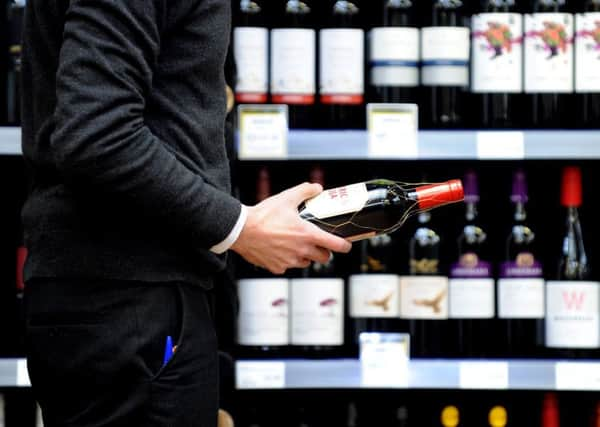Alison Douglas: Cutting back on booze helps our health and lifts the load on the NHS


Every week, we are buying enough alcohol for every person in Scotland to substantially exceed the weekly drinking guideline. Weekly sales are 20.2 units of alcohol per adult, whereas the Chief Medical Officers’ recommend not regularly drinking more than 14 units in a week. Fourteen units is around six pints of beer, a bottle and a half of wine, or half a bottle of spirits.
If we look at how much alcohol is sold per drinker, rather than per adult, then the figure increases from 10.5 to 12.5 litres of pure alcohol – equivalent to 48 bottles of vodka a year. More of us now describe ourselves as non-drinkers, but those of us who do drink are drinking more.
Advertisement
Hide AdAdvertisement
Hide AdAlcohol sales in Scotland are 17 per cent higher than in England and Wales and the vast majority of this difference is due to higher off-trade sales in Scotland. In particular, we buy far more spirits from shops, especially vodka.


Whisky may be our national drink but it’s vodka that we are buying and drinking more of.
Unsurprisingly, our higher overall consumption means we also suffer more alcohol-related hospital admissions and deaths than the rest of the UK.
Pubs, clubs and restaurants only account for about a quarter of total alcohol sales. We now buy most of our alcohol from supermarkets and corner shops. Retailers – with scant regard for the health or social consequences – use alcohol as a loss leader to attract customers; stacking it high and selling it cheap.
The importance of price in shaping our drinking habits cannot be underestimated and that’s why increasing the price of the cheapest, most damaging drinks through a 50p minimum unit price is so vital.


Of course, while alcohol sales paint a useful – and worrying – national picture, we know that there are big differences in how much we drink individually.
At one end of the spectrum, around one in five Scots don’t drink at all, while at the other end, heavy drinkers attending NHS treatment services in Glasgow and Edinburgh were consuming an average of 185 units of alcohol per week.
But it’s worth highlighting that one in four of us are regularly exceeding the recommended guidelines of 14 units per week. That’s one million people in Scotland putting themselves at increased risk of breast, bowel and oral cancers, stroke, liver disease and mental health problems.
Advertisement
Hide AdAdvertisement
Hide AdAll drinking carries a degree of risk and that risk generally increases in line with how much we consume. Chief Medical Officers advise spreading drinking over three days or more during the week to minimise the risk of accidents and injuries associated with heavy drinking sessions, and increasing how many alcohol-free days you have each week is a good way to cut down.
There are lots of benefits to drinking less, and even small changes can make a big difference. Checking the strength of drinks is important as brands can vary dramatically, or try some of the low alcohol and alcohol-free options that are now available. Watch out for bigger measures poured at home because it’s all too easy to be far more generous than a standard pub measure.
The short-term paybacks of cutting down include improved mood, better sleep, more energy and more time to make the most of evenings and weekends rather than suffering the fuzzy head and nausea of a hangover. There’s also our waistlines to think about. Alcohol is full of calories, with one large glass of wine containing up to 200 calories – the same as a sugar doughnut.
The reality is that far too many of us are drinking at levels that endanger our health. We can all take a look at our own drinking habits to see if we would benefit from cutting down. But we also need to think more broadly about whether our national approach to reducing alcohol consumption is sufficient to the task.
The Scottish Government is due to publish the next phase of its alcohol strategy shortly and we hope it will contain bold action to reduce the availability and marketing of alcohol. Alcohol is available anytime, anyplace, anywhere and we’re encouraged to drink in every social situation. We can’t expect people to drink less without making it easier for them to do so.
Alison Douglas, Chief Executive, Alcohol Focus Scotland